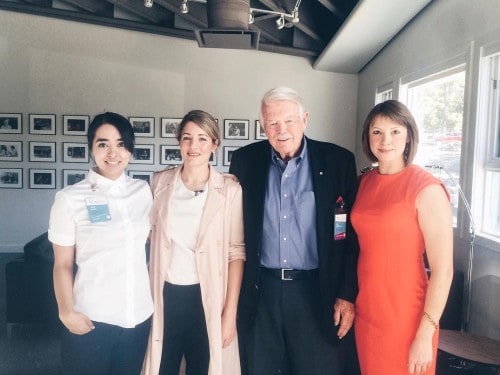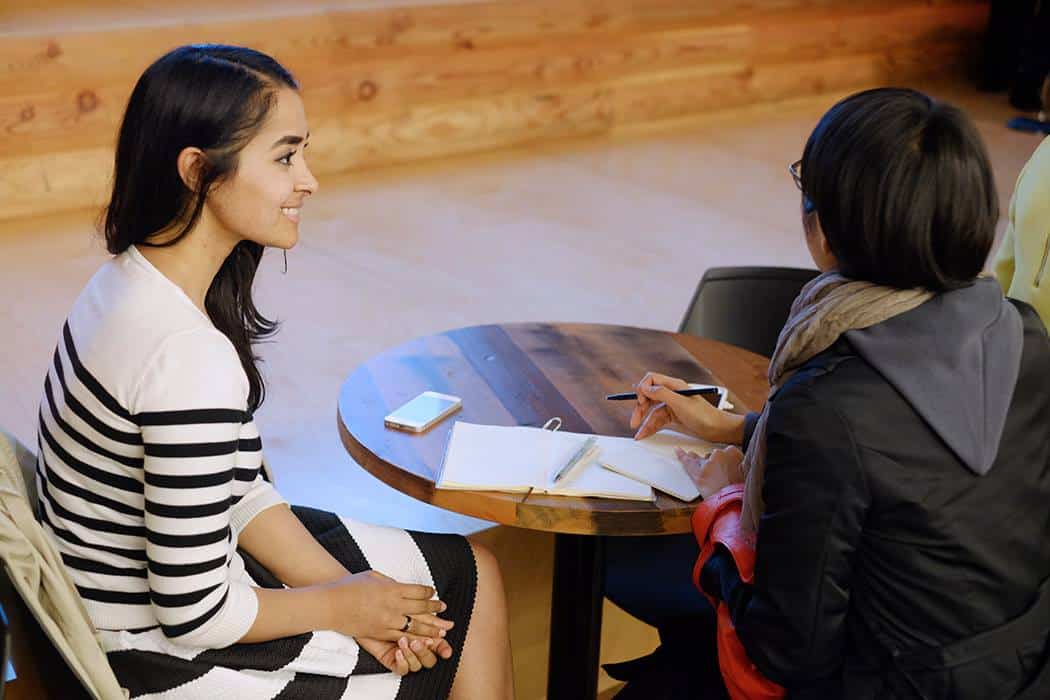Raji Aujla is the National Marketing and Program Strategist and National Events Manager with Business for the Arts (BftA), the country’s only national charitable association of business members who support the arts. On top of this, she is the Creative Director of her own eco-friendly fashion line, Aujla.
SDTC: Can you walk us through a typical day in your life?
RA: I read an interesting article in Tech Insider where Amy Cuddy describes extending your arms and legs as wide as possible while still in bed in order to enhance your self-confidence. So the very first thing I do when I wake up is stretch as wide as possible. I meditate for another fifteen-thirty minutes afterwards to kick off my day.
I am a mute in the mornings, so I don’t check my phone for any other reason except viewing my calendar to see what the day looks like and to decide on an outfit accordingly (thank you, faulty weather APPs!). I ride my bicycle to work and get to my office around 9am and begin the day at Business for the Arts’ head office where I work on national programming strategy and marketing.
My days consist almost entirely on our rebrand strategy and our much-anticipated Business for the Arts Awards Gala where we’ll be honouring Kiki Delaney and Karen Kain this year for their exceptional contribution to philanthropy, community, and the arts. I head out to Equinox Yorkville afterwards to decompress by listening to super gangster music. That’s a good time to reflect on the day’s work and organize priorities for the following day. I eat out a lot (I mean a lot).
My nighttime rituals are becoming increasingly sacrosanct. I juice and bottle my drinks for the next day while catching up with friends or listening to Buddhist meditations. I am starting to keep a gratitude journal, and just began reading Meditations by Marcus Aurelius.

Can you describe your career trajectory thus far?
I attended University of Toronto’s CCIT program, which focuses on the generation, diffusion, and social impact of new technologies, and how media and technologies interact with commerce, culture and communication. It was such a progressive program at the time because it applied social sciences to technology while technology was becoming more integrated to our daily lives.
Although I had mapped out my life at an early age to be the next Christiane Amanpour, I kept getting pulled into the arts and culture sector. I worked for a few magazines and journals before becoming The Spoke Club’s cultural curator. I moved on to consulting after leaving the club because I realized how much I craved a more balanced life which was hard for me to achieve during my time at the Club. After freelancing for a bit, I developed Arts/Tech, my consulting agency. It’s a super busy time since, in addition to working with BftA, I’m working with Mongrel Media as their curator for Mongrel House, a seven-day TIFF pop-up activation as well as Sunterra Custom Homes’ new community building expansion.
My trajectory notably deviated from journalism. Everything that I do now takes into account all of the skill sets I’ve accumulated thus far, and most importantly allows me to do what I’ve always wanted to do: build communities.

What’s the biggest challenge in getting businesses to support the arts?
Earlier this year, with support from the Ontario Arts Council, we funded a research study that was administered by Nanos Research. It identified that the majority of skilled workers and key talent would look for a thriving arts and culture scene when determining where to locate for work. This is such an interesting stat because most of businesses sponsorship dollars go to sporting and gaming events. Therefore, arts organizations, whether service or presenting, have to first educate prospective businesses on the value of their sponsorship dollar before illustrating how far that investment opportunity can go.
It’s also an interesting time for arts organizations as the tech sector, where there’s no shortage of business investment, integrates into community in ways we’ve never seen before. The arts organizations that tap into integrating technology into their programming will see a far better return for tech investment than laggard organizations. I mean check out what CJ Hervey did for the L.A. Philharmonic here…he literally was able to bring the symphony to the audience rather than uproot audiences to theatres. This appeals to the behavioural and engagement patterns of millennials and generation Z audiences so distinctly. Stratford Festival is also adapting newer practices to be ahead of the curve. There’s such a huge opportunity for arts organizations to leverage their sponsorship and engagement abilities through this cross-sectoral collaboration!
Can you give some examples of great art projects that these patrons have made possible?
There are numerous. Business for the Arts runs a national program called artsVest for small to mid-size arts organizations. Since its inception in 2002, it has seen nation-wide growth and helped procure over 3,220 partnerships between arts and businesses across Canada. In terms of dollars, if we were to combine the contributions from our local, municipal, provincial and Canadian Heritage partners, a total of $5.44 million in matching funds has generated over $13.51 million sponsorship dollars from the private sector. This totals to an impact of $20 million investment to the Canadian cultural economy.
We also program the Canadian Arts Summit with our partner, The Banff Centre – a summit that brings together chairs, executive directors, and artistic directors of Canada’s largest arts organizations. The summit was predicated upon the belief that these influential leaders could, by working together, better support Canadian artistic aspirations. The summit has grown into a leadership forum and for our twentieth anniversary next year, we are taking the summit to Confederation Centre in PEI (appropriately, as it’s Canada 150th birthday).
What advice can you give to other women starting out in your field?
It’s not necessarily specific to my field, but it’s so important to have a strong sense of self in addition to a strong work ethic. If you work in technology at any capacity, be prepared to learn new softwares and languages every year!
Why do you love to do what you do?
I spend my entire days helping people come together and grow. I mean, that’s pretty amazing.



 Follow Us On Instagram
Follow Us On Instagram
